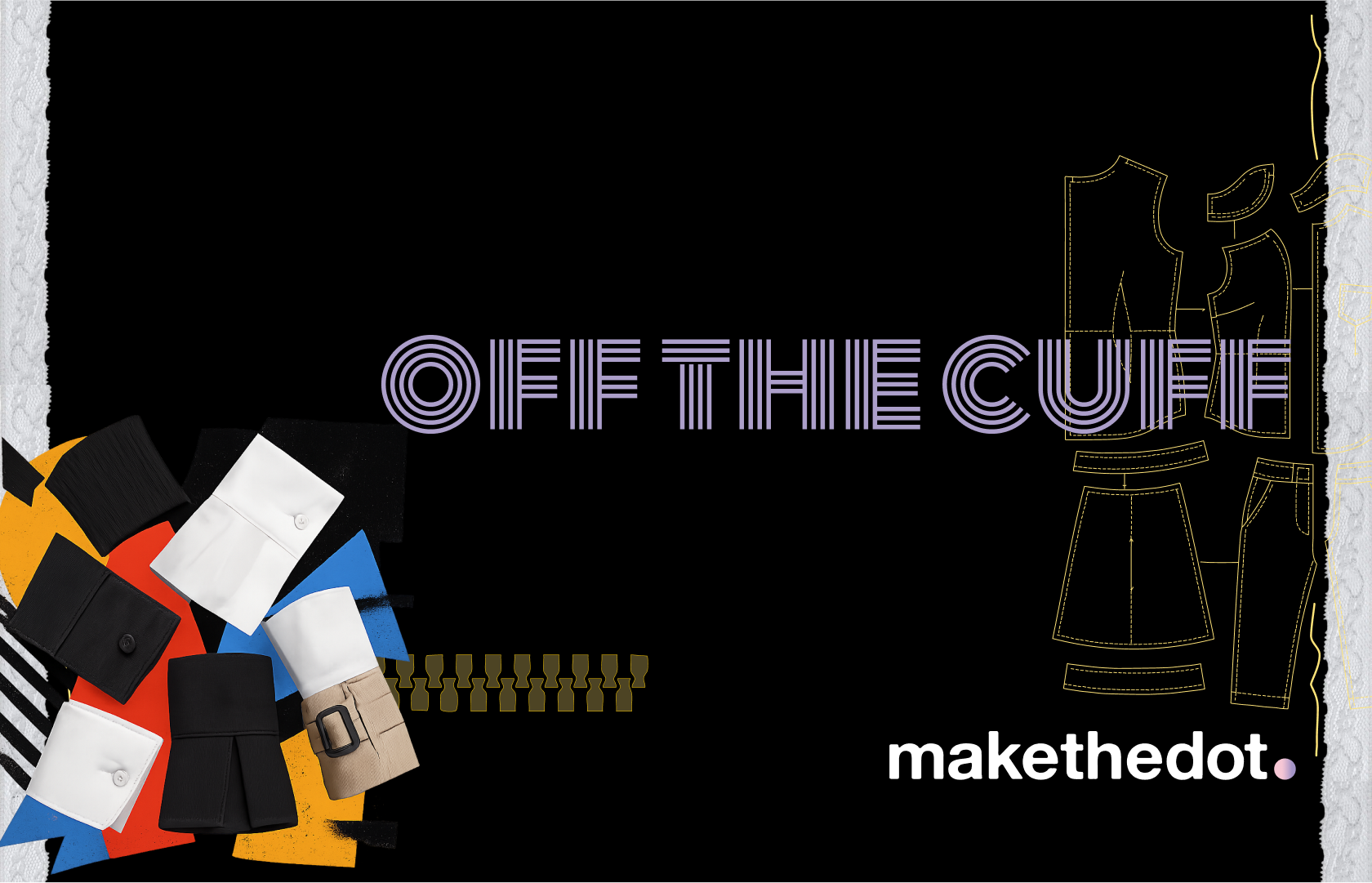Shifting Expectations in Fashion Education
There was a time when being a designer meant knowing how a garment was made. That time, many argue, is slipping away.
At Make the Dot’s recent Off the Cuff dinner, a group of designers, educators and industry voices gathered at The Agency of Record in Midtown East to reflect on the shifting landscape of fashion. Among many themes that surfaced during the evening was the question of how the next generation of designers can be supported with more real-world, start-to-finish experience to prepare them for what lies ahead. This framing also pointed toward a larger idea threaded throughout the evening: that deeper engagement with production and process is what ultimately strengthens craft, ensuring design education is not only about concepts but about creating work that can stand up in the real world.
Understanding the Full Journey of Design
A central question emerged in the discussion: how can students and young designers gain a fuller sense of how fashion actually works today? For some, this means technical fluency—understanding how a garment moves from concept to production. For others, it’s about learning how to navigate the broader system—supply chains, timelines, collaboration with vendors and factories—and how design fits within that complex network.
One guest put it this way: "There’s something important about understanding the full journey of a garment—from idea to production. That awareness changes how you design." The discussion emphasized that the true measure of readiness isn’t only about creating concepts, but about ensuring those ideas can be produced at scale—a reality of the profession that demands fluency in both design thinking and manufacturing processes.
Building Exposure to Production
The group reflected on how, as students, designers often have limited opportunities to engage with the realities of production. One guest recalled a visit to a factory with new designers at the company and noted how unfamiliar and even intimidating the environment felt for some. "Some found the experience so foreign they seemed unsure whether or how to engage directly with the workers—even something as simple as shaking hands felt uncertain," the guest explained.
This unease highlighted just how limited many designers’ understandings can be of the role they play in the broader fashion journey. As one participant explained: "Many over index on trend research or shopping for inspiration as the foundation of design. There’s often less emphasis on how those ideas become manufacturable products. The more exposure they get to the production side of the process, the more confidence they build." This perspective linked naturally to a broader point shared around the table: fashion depends on the skilled hands that stitch, dye, weave, and press. "Nothing replaces seeing how a garment is made," one attendee said. "You can research it, but you understand it differently when you experience it."
"There’s a real need for education to connect the dots," one participant noted. "Mentorship and hands-on learning are what give young designers the confidence to collaborate effectively." The group recognized that addressing these gaps requires collaboration across schools, companies, and the broader industry to create more structured opportunities for experiential learning.
Rebuilding the Craft
One guest offered a memorable metaphor: "The best CEOs are often the ones who once swept the floors." The sentiment reflected a broader truth shared around the table: those who have experienced the process from every angle tend to lead with more empathy, clarity, and respect. Understanding each link in the chain, from the ground level to strategic oversight, builds the kind of leadership that sees the full picture and values every contributor along the way.
The path forward is about building new bridges—between design and production, digital and physical, creativity and craft.
One attendee offered: "It’s about giving designers tools that help them understand how their decisions translate through the entire process. That’s what creates real alignment."
The group discussed how digital tools, including AI, are beginning to offer new pathways toward understanding—not as shortcuts, but as deeper frameworks for how to think. In this way, the conversation made clear that strengthening craft in the future will require more than just inspiration; it will demand applied knowledge, systems thinking, and the ability to see how creative choices ripple through production. The more designers are supported with tools and experiences that connect these dots, the stronger their craft becomes. And with the practical side accounted for, their minds are freed to take bigger creative leaps—exploring daring ideas with the confidence that those ideas can still be realized in the real world.
Technology as a New Classroom
Platforms like Make the Dot exemplify this shift. They highlight the complexities of production in a clear and collaborative way. By enabling designers to map out ideas visually, evaluate feasibility early, and share context clearly across teams, these platforms foster a more informed process.
Designers can focus on shaping their ideas and work closely with production teams to refine how those ideas are built. It’s a subtle distinction, but one that transforms the working dynamic into something more collaborative and less transactional.
When designers and manufacturers speak the same language, the results improve—not just in output, but in trust. And when technology helps reduce administrative friction, it frees creative teams to focus on what they do best: design with intention.
Many of the disconnects between design and production come down to bandwidth. Designers are often pulled in many directions, managing timelines and approvals, which limits the time they can spend engaging deeply with factory counterparts. Platforms like Make the Dot serve as connective tissue, giving both sides visibility and voice.
That’s why Make the Dot is more than a tool—it’s a new kind of classroom. It meets students and professionals where they are and helps them move forward, not just faster, but smarter and more aligned. And by grounding designers in the realities of production while freeing them from unnecessary friction, it creates the space for bolder, more daring creativity to flourish.




